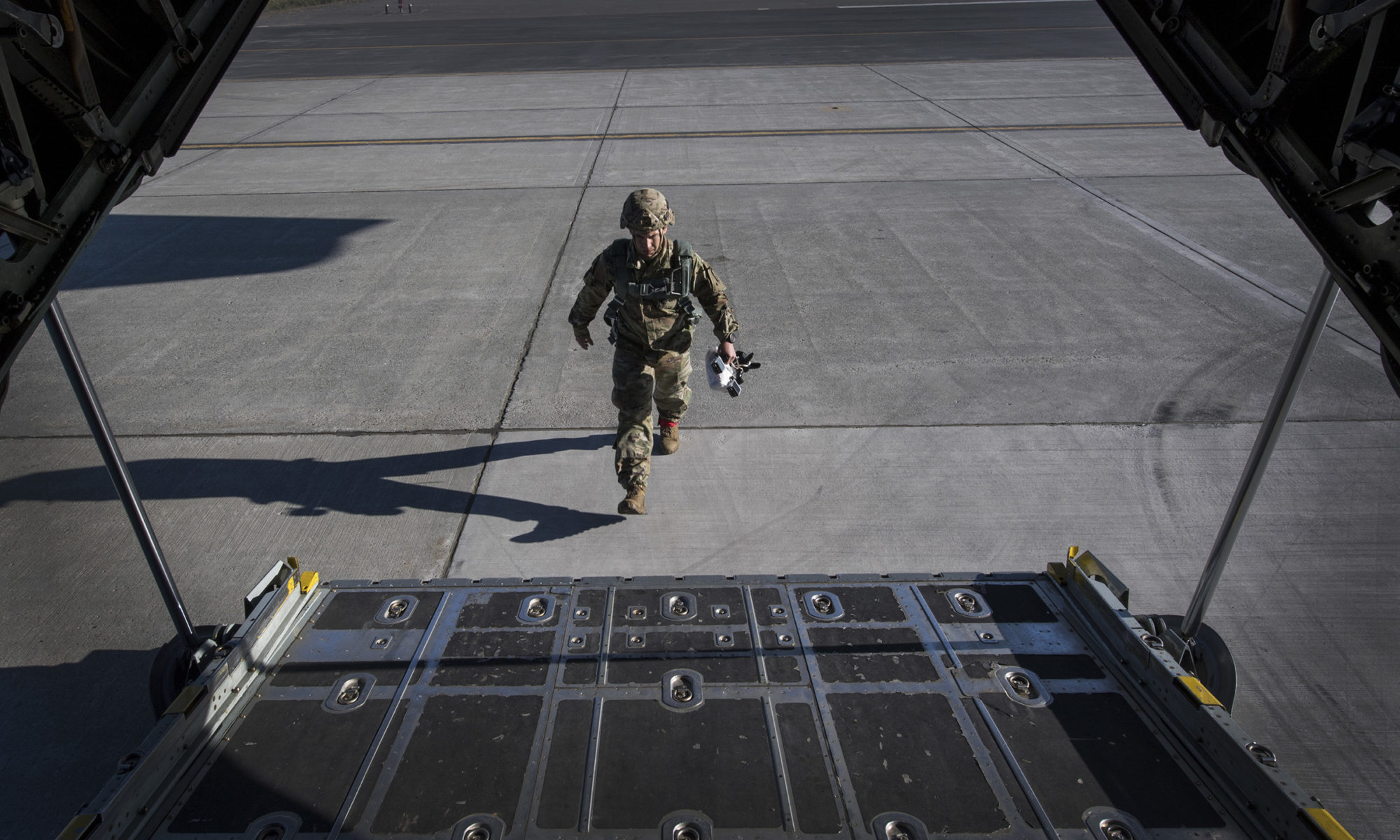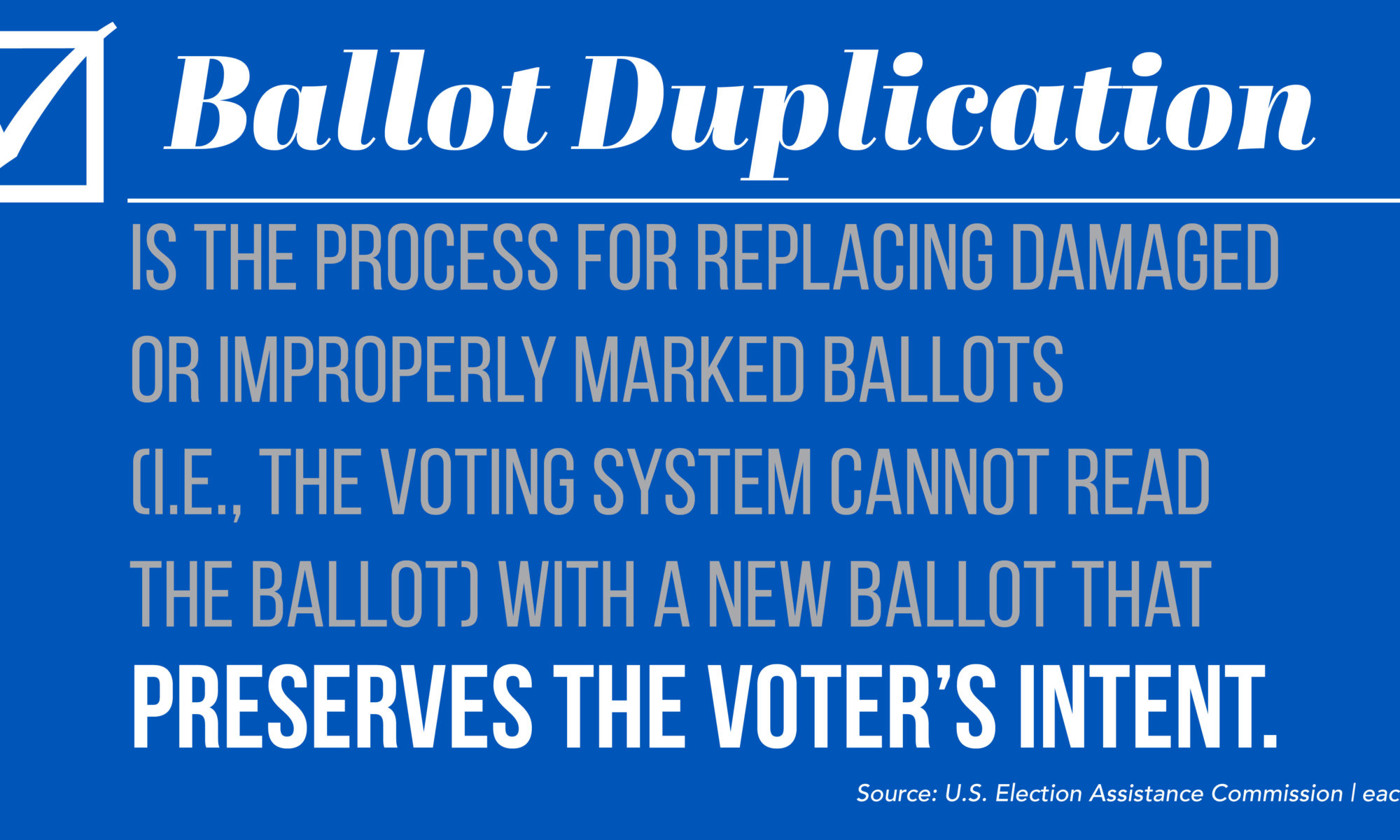This is an extraordinary year for election officials in many ways. Due to the COVID-19 pandemic, more voters will be voting by absentee or mail ballots rather than risk going into a crowded polling place. State laws on who can vote by absentee or mail ballot varies, but every election official in the country will see more absentee or mail ballots than typical. This will mean an uptick in the number of ballots that may need to be duplicated (or transcribed) before they can be sent through ballot tabulating equipment. See the first blog in our series on ballot duplication for more details on this process.
Election officials will also need to consider how to ensure that the process of duplicating ballots, and processing absentee ballots overall, is transparent. Every state permits political parties and candidates to appoint poll watchers or challengers to witness various aspects of the voting process. Some states also permit other observers, such as representatives from nonpartisan organizations or international groups. And in some states the entire election process—from preparing ballots and voting equipment to voting on election day, to tabulating ballots after the election—is open to public observation. Another challenge election officials face this year is how to safely permit authorized observers to the parts of the process they are lawfully allowed to observe without endangering voters or poll workers.
State and local election jurisdictions are handling this issue of observing the election, and in particular the processing of absentee ballots, in different ways. Below are a few innovative solutions that others may want to consider.
Online streaming of the process
In King County, Washington, which contains Seattle, voters have been casting their ballots by mail for more than a decade. Anyone can observe parts of their ballot processing activities, including the processing of alternate format ballots that have been returned by email or fax from overseas voters. King County also livestreams the process of reviewing a ballot, showing how teams of two people review each scanned ballot that contains stray marks or indicates unclear voter intent. The two reviewers use Washington’s Voter Intent Manual to ensure that ballots are counted as close to a voter’s intent as possible in a manner consistent across multiple review teams and elections.
The San Francisco Department of Elections livestreams many of its election processes online as well, including . This process takes place when ballots are irregularly marked, torn, bent, or otherwise damaged and unreadable.
In Arizona, even during non-pandemic years with a statewide, county, or legislative election, election officials are required to provide a live video link to the tabulation room in a counting center so that it can be viewed by the public. Recording of the proceedings is also kept as public record (Ariz. Rev. Stat. §16-621(C)).
In Arkansas, as a result of the pandemic, the governor issued an executive order encouraging election officials to livestream the processing, canvassing, and counting of absentee ballots online so that individuals can choose to observe the process remotely.
Providing more space to process ballots
The Chicago Board of Elections is taking an entire floor of a multi-story building to spread out the process of reviewing and duplicating ballots returned by mail and from military and overseas voters. Military and overseas voters can be emailed ballots, which they then print out, vote, and send back. Or, they can also visit a and make their ballot choices, then print out the ballot with a bar code that can be scanned and printed on the official ballot.
At the Chicago Board of Elections facility, teams of election workers review the printed ballots sent back who used the ballot marking website, making an official replacement ballot if a military/overseas voter sent in a ballot printed on non-official ballot paper stock. One election worker calls out the office and name of the candidate the voter selected, and the other judge fills in the choices and casts all valid votes on the ballot.
To maintain transparency, the Chicago Board of Elections allows poll watchers to observe this entire process. Extra space is allocated so that workers can safely physically distance and adhere to other COVID-19 protocols, on a dedicated floor in the building, while also providing the space for observers.
Providing options for observing
On July 20, the Vermont Secretary of State’s office issued a directive requiring local clerks to provide opportunities for members of the public to observe ballot processing. If in-person observation is not possible due to COVID-19, the process may be live-streamed to allow for remote viewing or may be recorded and the recording available for viewing at a later time.
The same Vermont directive permits overseas voters in countries experiencing suspended mail service to the U.S. and who otherwise wouldn’t be able to return their ballot by mail to return their ballot by email, as a PDF or photo file.
We’ll be interested to see how remote observation of ballot duplication and other post-election processes help with transparency for these and other election jurisdictions in November.
Read the other articles in our Ballot Duplication series:
Ballot Duplication: What it is, what it is not and why we are talking about it in 2020
Ballot Duplication: New Recommendations for Contingency Planning in the time of COVID-19 and Beyond
Ballot Duplication Technology: What Is It and How Does It Work?
Continued Advancement in Ballot Duplication Technology Solutions: Pilots in the Field
Contingency Planning During COVID-19: Ballot Duplication in the States
Frequently Asked Questions (and Answers) About Ballot Duplication


